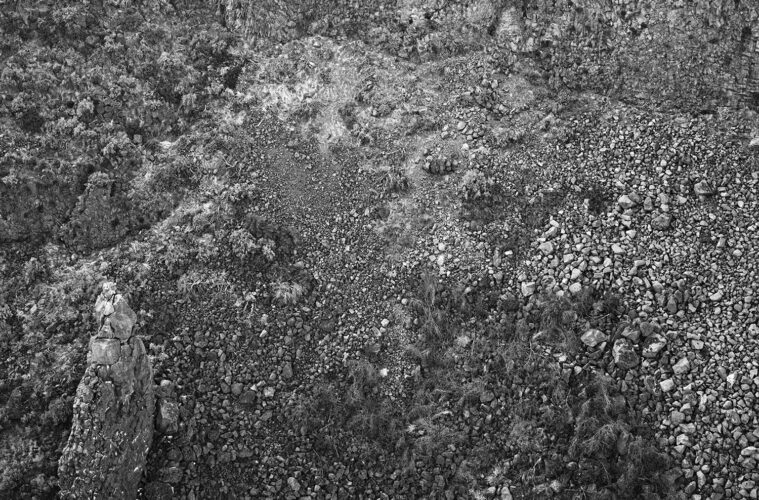Eric Angelo Bessel’s Mirror at Night arrives as a spectral continuation of his sonic exploration, following his 2023 debut Visitation. The Portland-based American-German artist, also known for his striking visual work, crafts here an intricate synthesis of post-rock, ambient, drone, and electronic textures. Across twelve instrumental compositions, Bessel constructs an immersive world of sound that reflects both the material and immaterial — a mirror in which artificial clouds drift and bioluminescent waters shimmer beneath the surface.
Released via Lore City Music, Mirror at Night feels suspended in time, where analog nostalgia meets digital transcendence. The album reimagines the sonic possibilities of vintage instruments such as the Mellotron and early-2000s Alesis synths, blending them into a meticulously balanced palette. The result is a timeless atmosphere that, as SPIN noted, “could easily be from the turn of the 20th century as it could the turn of the 22nd.”
The opening track, “Tendons”, sets the tone with an organic pulse beneath layers of synth resonance. The rhythm emerges subtly, almost imperceptibly, giving the impression of movement through fog. It feels less like percussion and more like the vibration of a living system, a heartbeat within a synthetic organism. Bessel’s rhythmic approach throughout the album resists traditional form; rather than driving the compositions forward, it anchors them in place, allowing textures and harmonics to drift freely.
“Snow Globe” follows as a delicate vignette, shimmering with crystalline tones that seem to rotate in slow motion. The piece evokes a sense of fragility and isolation, its cyclical structure mirroring the gentle swirl of particles in a sealed world. In contrast, “Scavengers” introduces a darker hue, its low drones and pulsing motifs creating tension between decay and renewal.
The middle portion of the album — particularly “Recombinant” and “Non-diegetic Sound” — deepens the sense of cinematic immersion. These pieces suggest a dialogue between sound design and emotion, recalling the haunted atmospheres of The Caretaker or the drifting reveries of Stars of the Lid. The synthetic layers seem to breathe, expanding and contracting as if responding to invisible tides. The rhythmic elements become skeletal, existing more as echoes than beats, reinforcing the feeling of dislocation from any fixed temporal point.
On “Moving Walkway,” subtle rhythmic repetition merges with evolving harmonic structures, producing a hypnotic flow. The composition captures the sensation of continuous forward motion within a static frame — a metaphor for the album’s central tension between stasis and transformation.
Side B opens with “Hesitation,” a brief yet poignant interlude, before “Headlamps” reintroduces an understated pulse. Here, flickering synth patterns resemble beams of light cutting through darkness, a sonic metaphor for navigation and searching. “Coming Around” extends this motif, its layered drones and reverberating textures creating an emotional crescendo that feels both human and mechanical.
The closing sequence — “Clearing,” “Buoy,” and “Aphotic Zone” — distills the album’s essence. “Clearing” offers a momentary sense of calm and resolution, while “Buoy” drifts gently, sustained by luminous tones. The final track, “Aphotic Zone,” descends into the deep, where light fades and sound becomes a tactile presence. It encapsulates the album’s fascination with the unseen and the unheard — the spaces where sound and silence coexist in fragile equilibrium.
Throughout Mirror at Night, Bessel’s production is precise yet deeply atmospheric. Each sound is placed with intention, each resonance given room to decay naturally. His use of reverb and spatial effects creates a sense of infinite depth, as if the listener were suspended within a reflective void. The mastering by Carl Saff preserves this clarity while maintaining the album’s dynamic range, ensuring that even the subtlest frequencies retain their emotional weight.
As Obscure Sound described it, Mirror at Night is “a stirring ambient success,” and indeed, it stands as a work of remarkable cohesion and vision. It’s a release of high artistic quality — one that merges compositional discipline with emotional abstraction. Within its meditative pace and ethereal sonorities lies an unspoken narrative: of memory, distance, and the beauty of impermanence.
We are pleased to host this review on our webzine, celebrating Eric Angelo Bessel’s ability to transform sound into an introspective landscape. Mirror at Night invites listeners to linger in reflection — a still, obsidian surface where the boundaries between past, present, and future dissolve into one continuous shimmer.

